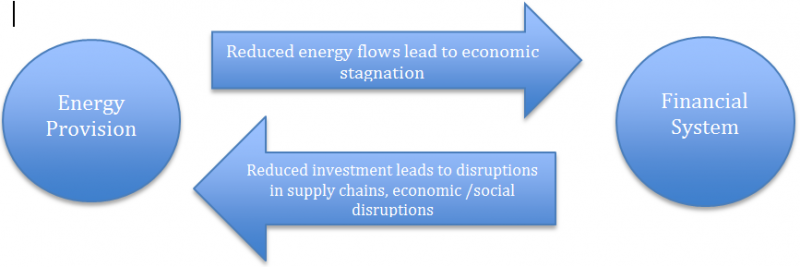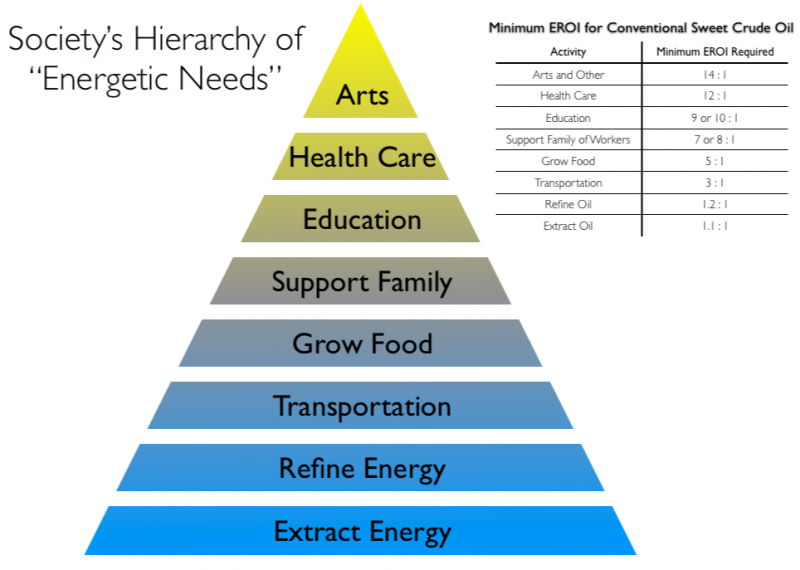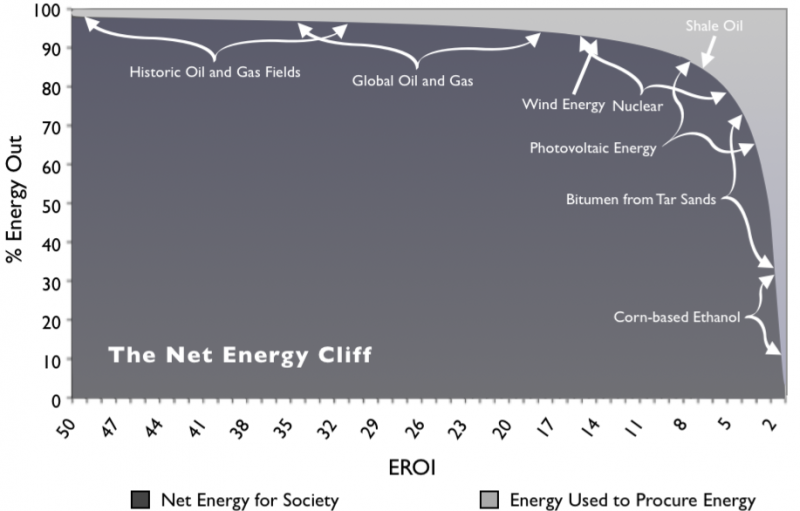Encounters #3: Facing the reality of peak oil
September 2014
 On Sunday, September 21, Maryknoll missioners, Affiliates and staff members participated in the People’s Climate March in New York where we marched with people of faith, unionists, environmentalists, grandparents, and many others to tell the world that the time is now to address climate change. (Photo: Sr. Genie Natividad, MM and Fr. Dave Schwinghamer, MM, carry the Maryknoll banner; immediately behind Sr. Genie is former lay missioner Kim Nagy, and lay missioner Debbie Northern wears the Maryknoll hat behind the banner. Photo by Cecilia Espinoza.)
On Sunday, September 21, Maryknoll missioners, Affiliates and staff members participated in the People’s Climate March in New York where we marched with people of faith, unionists, environmentalists, grandparents, and many others to tell the world that the time is now to address climate change. (Photo: Sr. Genie Natividad, MM and Fr. Dave Schwinghamer, MM, carry the Maryknoll banner; immediately behind Sr. Genie is former lay missioner Kim Nagy, and lay missioner Debbie Northern wears the Maryknoll hat behind the banner. Photo by Cecilia Espinoza.)
One key to addressing climate change is to recognize that fossil fuels, gifts of the Creator, are finite. When they are gone, both man-made and human ecosystems will experience great change. This is particularly true in the case of oil. We are rapidly nearing the point of global peak oil production. While few in government or media refer to this fact, the societal changes that will occur after peak oil can be profound and difficult.
This edition of Encounters highlights the importance of energy for civilization as we know it and the urgent need for changes in the global economy in order to avoid the worst effects. With much misunderstanding and disbelief around peak oil, we decided to dedicate this entire edition of Encounters to understanding the reality of peak oil. Our next edition will focus on how communities are preparing for a future without cheap oil.
P.S. – Join us this fall for a four-part webinar series on Building a Faithful Response to Corporate Power. Some featured speakers include David Korten, Prof. Bill Quigley, Heather VanDusen of B-Labs, Robert Weissman and Melinda St. Louis of Public Citizen, Mateo Nube of Movement Generation, and John Duda of Democracy Collaborative. Click here for more details and registration information.
Importance of energy for society
It is difficult to overstate how important oil is for civilization as we know it. A barrel of oil is estimated to produce as much energy as a human can produce in approximately 23,000 hours. It is this massive surplus of energy that has been the basis of societal advances over the past 200 or more years. Once that surplus is dissipated, many aspects of modern civilization will be impossible.
In 1973, economist E.F. Schumacher said, “There is no substitute for energy. The whole edifice of modern society is built upon it. It is not ‘just another commodity’ but the precondition of all commodities, a basic factor equal with air, water and earth.”
So many things are made from oil and its derivatives – from highways to tires, medicines, fertilizers, cosmetics, and everything made of plastic. Even things that are not made from oil depend on it to be made and transported. When we reach peak oil production (not if, but when), it will have a resounding effect on the global economy. Many of the things we use every day will become scarce or simply stop being made, and millions will lose their jobs as the economy retracts. Unfortunately, most of those people will not find new employment, but will need to create their own livelihoods in new ways. Food systems that are highly dependent on oil and gas at all stages of production will also experience breakdowns resulting in famines in many areas. This is why it is so important for us to prepare for these changes.
Charles Hall, professor of systems ecology at the State University of New York, explains, “What happens when the EROI (energy return on investment) gets too low? What’s achievable at different EROIs? If you’ve got an EROI of 1.1:1, you can pump the oil out of the ground and look at it. If you’ve got 1.2:1, you can refine it and look at it. At 1.3:1, you can move it to where you want it and look at it. We looked at the minimum EROI you need to drive a truck, and you need at least 3:1 at the wellhead. Now, if you want to put anything in the truck, like grain, you need to have an EROI of 5:1. And that includes the depreciation for the truck. But if you want to include the depreciation for the truck driver and the oil worker and the farmer, then you’ve got to support the families. And then you need an EROI of 7:1. And if you want education, you need 8:1 or 9:1. And if you want health care, you need 10:1 or 11:1.”
A recent Stanford study provides graphs showing the direct relationship between energy availability and numerous social well-being measures such as health expenditures, children’s weights, female literacy, and access to clean water. They found that “countries with an EROEI ratios of less than 15-25:1… tend to have a poor to moderate ‘quality of life.’” Archaeologist Lynn White has estimated that hunter-gatherer societies operated on a ten-to-one net energy basis (EROEI = 10:1).
http://mahb.stanford.edu/wp-content/uploads/2014/03/energy-policy_Lambert_et.al_2013.pdf
Without the massive surplus of energy that we have become accustomed to, many aspects of modern society will become impossible to sustain.
Reality of peak oil
Reaching the point of peak oil does not mean that all oil has been extracted from Earth, but that we reach the point of maximum production of oil in terms of barrels per day. This point usually occurs when half of the available oil has been extracted.
Every oil well drilled, and every oil field experiences peak oil. According to the Royal Swedish Academy of Sciences, 54 of the 65 most important oil-producing countries have already passed peak oil production. In these countries, daily oil production continues to fall, despite rises in prices and new technologies.
In fact, global production of conventional oil has peaked since 2005 with production peaking around 75 million barrels per day. According to market analyst Tom Whipple, “[It] has been clear for some time that the only factor keeping global crude output from moving lower is the continuing increase in U.S. shale oil production mostly from Texas and North Dakota.” Unfortunately, this boom in shale oil production is predicted to be a short-lived phenomenon with rapidly decreasing extraction rates and a lack of water and sand, two important inputs to fracking wells, near the largest gas fields. Both the Energy Information Administration (EIA) and the International Energy Agency predict that the U.S. shale (tight) oil will begin to peak some time in 2016.
While many assume that we will be able to replace oil with other alternative sources, as Richard Heinberg shows in his sobering report, Searching for a Miracle: Net energy limits and the fate of industrial society, “there will be NO combination of alternative energy solutions that might enable the long term continuation of economic growth, or of industrial societies in their present form and scale.” (emphasis his)
A central problem is that no alternative comes close to oil in terms of its energy returned on energy invested (EROEI) and transportability. We always extract the easiest, richest sources of energy first. For many decades, every barrel of oil used to extract more oil would bring in up to 100 barrels of new oil, for an EROEI value of 100:1. But as we have used up the easiest sources, we are now forced to extract oil in deep water or through massive tar sands operations, which have dramatically lower EROEI values. While oil wells in 1930 had 100:1 returns, in the 1970s rates had lowered to 30:1 and today’s oil wells hover between 10:1 and 20:1. Newer sources like tar sands and shale gas have very low EROEI values of 3:1 and up to 5:1 respectively. The importance of lower EROEI rates for society is discussed later, but the important point is that we are getting less and less energy for our efforts as time passes and none of the known alternatives come close to providing the same amount of energy.
Unfortunately, we are on the downside of the net energy cliff with the replacement sources for liquid energy rapidly decreasing in terms of EROEI:
http://energyskeptic.com/2013/2012-global-eroi/net-energy-cliff/
Solar and wind energy, seen by many as the solution for the future, will not save the day for a variety of reasons. First, it does not replace liquid fuels that will be the main problem. It could help power electric cars, but to create the needed infrastructure will require decades and massive investments, time and money that we do not have.
Second, neither of these technologies is renewable; they are both highly dependent on fossil fuels to provide the aluminum, copper, glass and rare metals of which they are made. Energy blogger John Weber shows with links and pictures the mammoth industrial processes required to create these inputs.
Finally, even when fully functioning, wind and solar do not replace fossil fuels, but can even increase their demand, as can be seen in the experience of Germany, the country with the most advanced solar and wind energy grid in the world today. German magazine Spiegel shows that “[w]hile the amount of electricity from renewable energy rose by 10.2 percent in 2012, the first year of the new energy policy, the amount of electricity generated in hard coal and brown coal plants also increased by five percent each.” A study by the German government showed that “brown coal’s competitive position will be ‘hardly diminished by an increasing share of renewable energy in the mix.’”
Despite these facts, a number of well-educated people still deny that peak oil is a concern, saying it will only happen decades from now, or will never happen, and will not create noticeable societal or economic effects. Nate Hagens helps explain why in a three-part examination of these differences in opinion.
What a post-peak oil world might look like
Russian-American engineer Dmitry Orlov’s description of Russia’s economic collapse after its oil production fell sounds quite similar to the U.S.’s experience when it reached domestic peak oil in 1970: “With oil in short supply, industrial production plummets, the economy stalls, there is a financial crisis because of debts going bad, followed by a commercial crisis because of falling demand and lack of credit, followed by political collapse caused by dwindling government revenues, followed by social collapse as unemployment rises and crime becomes rampant.”
Today’s reality could make the coming collapse even more dire. Instead of being relegated to one country or area, it is a global economy that will collapse this time, encompassing all humanity.
The fact that many supply chains for essential goods, including food, are based on “just in time” production makes them much more susceptible to breakdowns. As energy and environment writer Kurt Cobb points out, “Grocery stores are believed to have no more than a three-day supply of food. That means those who don’t grow their own food (which is most of us) will find themselves going hungry within a week of an emergency that shuts down the just-in-time delivery system to stores. What could do that? Try an avian flu pandemic.”
One more reason to expect fairly large breakdowns in the global economy is the tight relationship between the worlds of finance and energy production. In a very interesting presentation, Roger Boyd, author of the book Energy & the Financial System, explains how the two systems are highly co-dependent “because the energy system requires massive investments to develop new sources of energy [while] the financial system requires the economy to keep growing, which requires new sources of energy to keep that growth going.”He shows how the two systems are mutually enforcing feedback loops where a reduction in energy production leads to economic stagnation, which then reduces the amount of money available to develop sources of energy, which leads to another drop in energy production.

Even if a miracle replacement with a similar EROEI and easy transportability of oil was found, it would take many years to adapt systems to a new energy source. A study commissioned by the U.S. Department of Energy showed that unless a crash program of mitigation begins at least 20 years before reaching peak oil (drastically lowering liquid fuel use and rapidly converting systems to new sources of energy), there will be no way to avoid large breakdowns. If governments wait until reaching peak oil to act (where we appear to be today), a period of 20 years, at minimum, of severe energy shortages will exist, due to the time and energy it takes to change large systems.
As Heinberg states, “[A]ny kind of adaptive energy transition will demand substantial new investments for the construction of more energy-efficient buildings and/or public transport infrastructure. However, such requirements will come at the same time that substantially more investment will be needed in energy production systems. Societies may simply be unable to adequately fund both sets of needs simultaneously. Noticeable symptoms of strain would include rising costs of bare necessities and a reduction in job opportunities in fields not associated with basic production.”
We can look at examples of societies in the past that overran their energy (and other) resources, to see that those experiences have been very difficult, to say the least. Some books that examine these historic examples are Joseph Tainter’s The Collapse of Complex Societies, Peter Turchin’s Secular Cycles, and William Catton’s Overshoot: The ecological basis of revolutionary change. While it is difficult for many to imagine a large breakdown in societal functioning, it has happened numerous times in the past.
Yet the overshoot today is likely to be even more difficult than that of early civilizations, because early civilizations were not as dependent on fossil fuels and most people still had skills that were needed post-collapse. After many generations living with massive amounts of surplus energy, most people have lost basic skills that will be necessary post-collapse such as growing food, canning, making and fixing clothes, etc.
As Dr. Michael Mills, professor at Loyola Marymount University, writes in his helpful introduction to peak oil, “The global oil peak is different from all the little localized peaks in that the planet as a whole cannot import its way out of an oil shortage, resulting in a global economic collapse. The economic collapse will, in turn, cause global oil production to crash even faster, extinguishing the industrial economy.”
One potentially positive aspect of peak oil that is often ignored is that it will likely decrease the release of greenhouse gases that cause climate change. As Dave Cohen of the Association for the Study of Peak Oil and Gas writes concerning the projected “business as usual” (BAU) scenario in a world of peak oil:“In all BAU scenarios [of the International Panel on Climate Change], it is presumed that energy technology (coal-to-liquids, biofuels, electric cars, any or all of these) will seamlessly step up to replace oil as the need arises. This assumption is not yet proven, and it appears to be tragically unrealistic.” As Scientific American magazine puts it, peak oil may keep catastrophic climate change in check.”
Another compilation of useful resources on peak oil and a future economy with fewer resources can be found on our website here.
ENCOUNTERS is an e-newsletter publication of the Maryknoll Office for Global Concerns’ Faith Economy Ecology Program. Each section of ENCOUNTERS focuses on one of the four pillars of the Faith Economy Ecology Transition statement endorsed by more than 80 groups. Read the statement in its entirety here.



